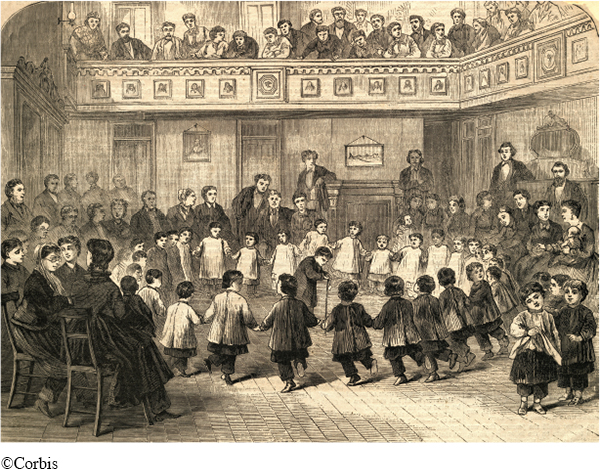Utopian Communities
While most reformers reached out to the wider society to implement change, some activists established self-contained communities to serve as models for others. The architects of these utopian societies, most formed in the North and Midwest, gained inspiration from European intellectuals and reformers as well as American religious and republican ideals.
In the 1820s Scottish and Welsh labor radicals such as Frances Wright, Robert Owen, and his son Robert Dale Owen established several utopian communities in the United States. They perceived the young republic as open to experiments in communal labor, gender equality, and (in Wright’s case) racial justice. Their efforts ultimately failed, but they did arouse impassioned debate.
Then in 1841, former Unitarian minister George Ripley established a transcendentalist community at Brook Farm in Massachusetts. Four years later, Brook Farm was reorganized according to the principles of the French socialist Charles Fourier. Fourier believed that cooperation across classes was necessary to temper the conflicts inherent in capitalist society. He developed a plan for communities, called phalanxes, where residents chose jobs based on individual interest but were paid according to the contribution of each job to the community’s well-being. Fourier also advocated equality for women. More than forty Fourierist phalanxes were founded in the northern United States during the 1840s.
A more uniquely American experiment, the Oneida community, was established in central New York by John Humphrey Noyes in 1848. He and his followers believed that Christ’s Second Coming had already occurred and embraced the communalism of the early Christian church. Noyes required members to relinquish their private property to the community and to embrace the notion of “complex marriage,” in which women and men were free to have sexual intercourse with any consenting adult. He also introduced a form of birth control that sought to ensure women’s freedom from constant childbearing and instituted communal child-rearing practices. Divorce and remarriage were also permitted. Despite the public outrage provoked by Oneida’s economic and sexual practices, the community recruited several hundred residents and thrived for more than three decades.

REVIEW & RELATE
How did efforts to alleviate poverty and temper alcohol consumption reflect the range of reform tactics and participants during the 1830s and 1840s?
What connections can you identify between utopian communities and mainstream reform movements in the first half of the nineteenth century?
Exploring American HistoriesPrinted Page 368
Exploring American Histories Value EditionPrinted Page 273
Chapter Timeline